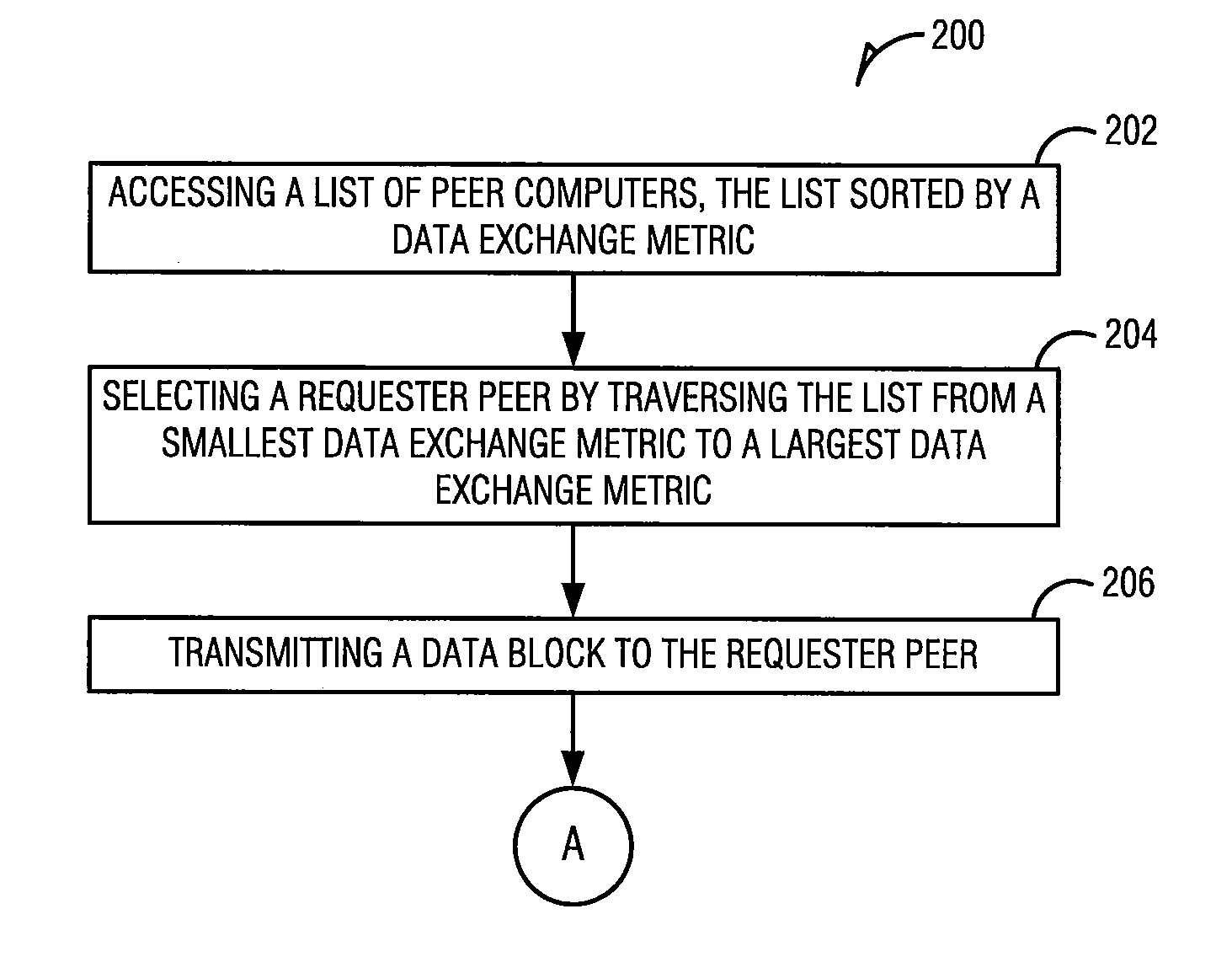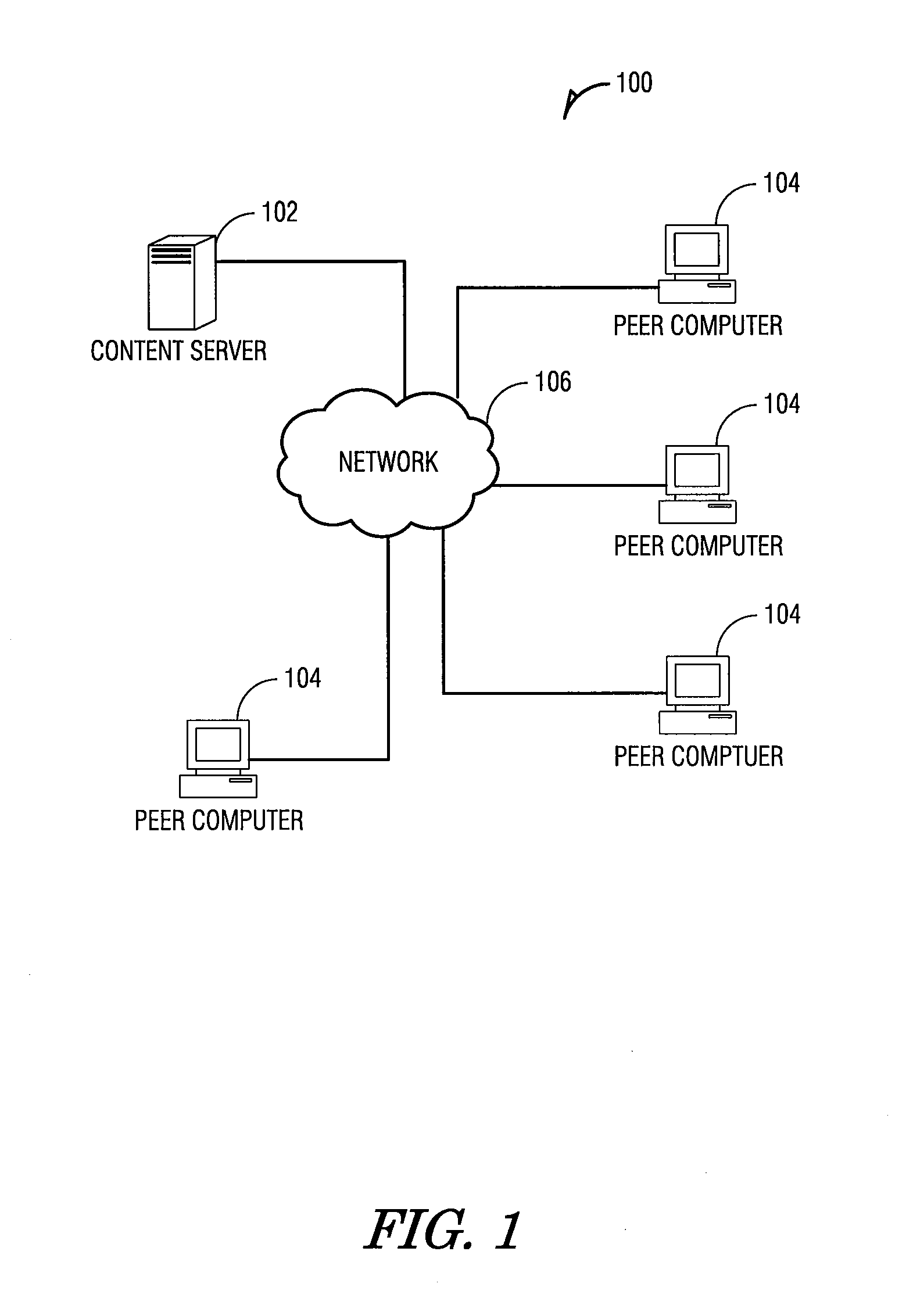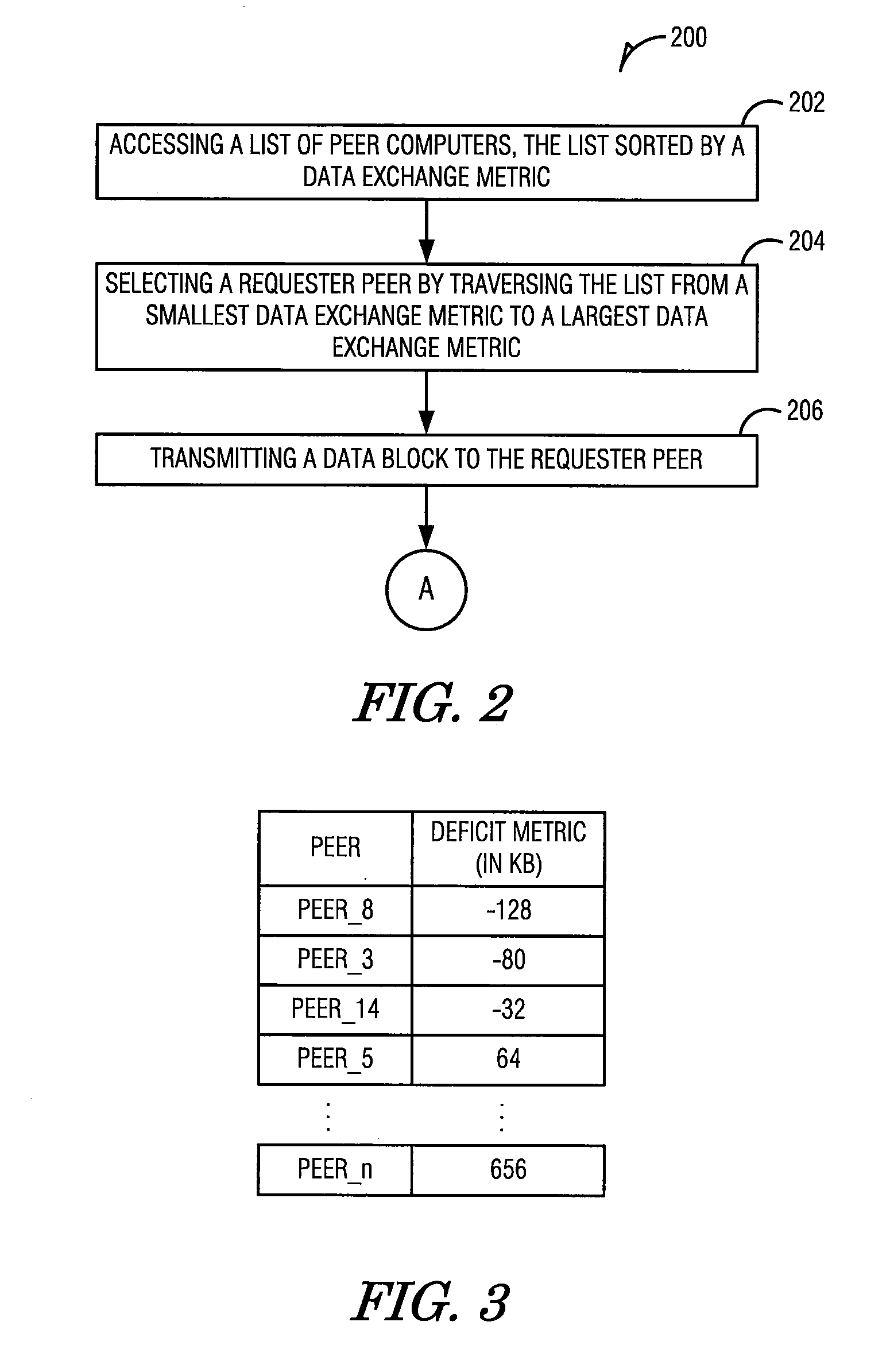Systems and methods for peer-to-peer bandwidth allocation
a peer-to-peer and bandwidth allocation technology, applied in the field of computer networking, can solve the problems of crippling other network-bound processes running on the users' machines, peer-to-peer and the bandwidth allocation is not fair. achieve the effect of effective data distribution
- Summary
- Abstract
- Description
- Claims
- Application Information
AI Technical Summary
Benefits of technology
Problems solved by technology
Method used
Image
Examples
Embodiment Construction
Overview of Fairness in P2P Systems
[0046]The usage of Peer-to-Peer (P2P) file-sharing applications on the Internet has experienced explosive growth. Many users and businesses now rely on P2P file-sharing for distributing videos, software, and documents. P2P file-sharing applications are plagued by unfairness in how bandwidth among peers is used and allocated. Peers do not receive service commensurate with what they contribute to the system. Unfairness can cause many performance problems. Peers can be disincentivized from contributing more upload bandwidth. A growing number of free riders, e.g., peers who cap their upload bandwidth to zero or a small value, take as much as possible from the system while contributing little resources. Lack of real-time rewards for contributions can lead to poor performance, particularly in streaming applications.
[0047]Fair bandwidth allocation in P2P systems can be difficult to achieve for several reasons. First, bandwidth resources are distributed al...
PUM
 Login to View More
Login to View More Abstract
Description
Claims
Application Information
 Login to View More
Login to View More - R&D
- Intellectual Property
- Life Sciences
- Materials
- Tech Scout
- Unparalleled Data Quality
- Higher Quality Content
- 60% Fewer Hallucinations
Browse by: Latest US Patents, China's latest patents, Technical Efficacy Thesaurus, Application Domain, Technology Topic, Popular Technical Reports.
© 2025 PatSnap. All rights reserved.Legal|Privacy policy|Modern Slavery Act Transparency Statement|Sitemap|About US| Contact US: help@patsnap.com



